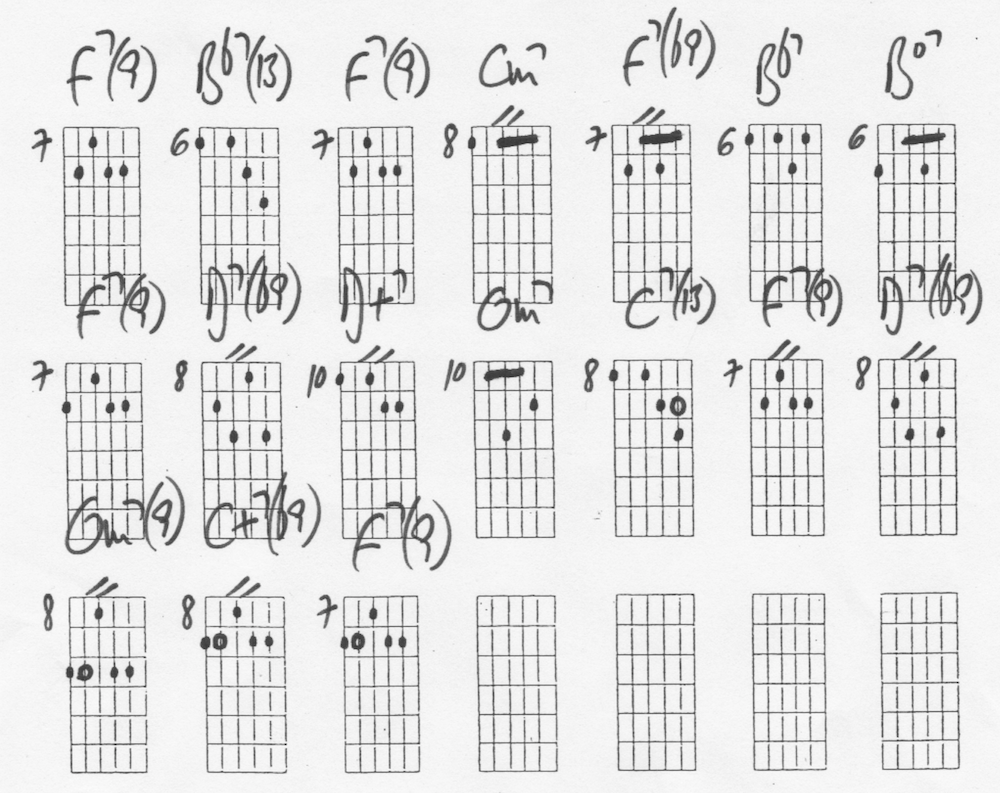Comping means “to accompany”. In our case, it implies that those chords can be used when accompanying a soloist who is improvising over a Jazz Blues chord progression.
Comping Study for Jazz Blues in F
 |
|
 |
|
 |
|---|
Free Extract:
Each diagram represents a full measure, except when slashes are written above the chord—in which case those slashes represent the number of beats for that particular chord. The circled dots are optional replacement bass notes.

All of the chords have the root in the bass, except for the diminished 7th chord used as a substitution for the D7 chord. It that case, we are playing an F#dim7 which will give us a D7(b9) sound.
As I explained on the video, if a chord has its root on the 5th string, you may replace it with a bass note on the 6th string. Those voicings can be played with a pick, with your fingers (classical style) or with pick and fingers. Just watch for unwanted notes when strumming.
Since no particular rhythm is indicated, you can play those chords either long and sustained, or more staccato. Variations are always welcome, as long as you respect the 12-bar form, of course...
Also, make sure to bring out the top note of all those chords: after all, that is where the voice-leading is important.
If you have any questions or comments, do not hesitate to contact me through The Guitar Channel by commenting below or directly through my website brunojazz.com.
See you again soon!
Bruno.
Note from The Guitar Channel
If you are looking for an excellent Jazz guitar teacher, I highly recommend Bruno. He produced many Jazz chronicles in French for La Chaîne Guitare which were highly appreciated by the Backstage Pass subscribers. I also took a Skype lesson with him once (read the story about it in this article) and it was a lot of fun and very useful to help my play better and increase my vocabulary on guitar.

Pierre.






